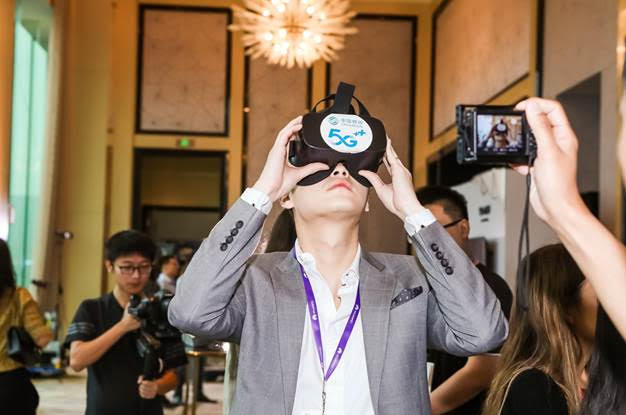[Singapore, September 5, 2019] The 5th Huawei Asia-Pacific Innovation Day was held in Chengdu on Tuesday, September 3, 2019. At the event, Huawei and partners showcased a variety of innovative industry applications to demonstrate the infinite potential of 5G commercial applications, such as 5G + virtual reality (VR), 5G + 8K videos, 5G + drones, 5G telemedicine, and a 5G connected ambulance.
Enhancing consumer experience and empowering industrial digitisation are the main goals of 5G deployment.
5G + VR: At the Panda Sanctuary several kilometers away, 360° VR panoramic cameras broadcast the pandas’ movements from within the enclosure live over the 5G network to delegates wearing VR headsets. While wearing the headsets, participants enjoyed an immersive experience inside the enclosure with the adorable pandas.
5G + 8K videos: Supported by 5G networks, the 8K screen displayed live UltraHD (UHD) videos of performances in real time, allowing participants to enjoy these performances with clearer images and details.
Enabled by ultra-high speed 5G networks, these innovative applications caught the eyes of visitors from many countries and regions in Asia Pacific. Taking 8K video as an example, its resolution is up to 7680×4320; four times higher than 4K video. It requires a backhaul upstream bandwidth of at least 100 Mbit/s, which only 5G networks can provide.
Since 5G networks have greater coverage, 8K live streaming will be possible whenever and wherever you want it, at a lower cost and higher efficiency. In the future, 5G will be further integrated with VR, 8K live streaming, and other services. This will facilitate more innovative applications in areas such as telemedicine and live broadcasting, which will accelerate the development of digital economy.
5G will enable more applications in various industries, greatly improving efficiency and reducing cost. As shown at the event, 5G networks will serve as the foundation of a comprehensive emergency medical aid system consisting of connected ambulances and AI-supported applications like AR, VR, and drones. When a patient boards a 5G-connected ambulance, the doctor can use the in-vehicle medical equipment to complete medical examinations such as a blood test, ECG test, or a B-mode scan. At the same time, related information, such as scan images, medical signs, and medical records of the wounded can be sent to hospitals in real time, so that doctors can make emergency treatment plans and prepare for operations in a timely manner. This will save more time for rescuing the wounded and increasing the rate of treatment success.
In addition to the applications shown at the event, visitors also experienced other innovative applications powered by 5G networks outside the venue. These applications included a demo truck of multi-dimensional 5G networks in the Southern Zone of the Chengdu Hi-tech Industrial Development Zone, 5G buses in the Chengdu Second Ring Road, and telemedicine of the No.3 People’s Hospital of Chengdu. In these scenarios, people experienced the high speed of 5G networks and applications like 5G-enabled VR and UHD videos on the move.
5G is on. The commercial use of 5G networks will bring new experiences to consumers, enable industrial digitisation, facilitate innovation in industrial applications, and create greater social and economic value.
-End-
About Huawei
Huawei is a leading global provider of information and communications technology (ICT) infrastructure and smart devices. With integrated solutions across four key domains – telecom networks, IT, smart devices, and cloud services – we are committed to bringing digital to every person, home and organisation for a fully connected, intelligent world.
Huawei’s end-to-end portfolio of products, solutions and services are both competitive and secure. Through open collaboration with ecosystem partners, we create lasting value for our customers, working to empower people, enrich home life, and inspire innovation in organisations of all shapes and sizes.
At Huawei, innovation focuses on customer needs. We invest heavily in basic research, concentrating on technological breakthroughs that drive the world forward. We have more than 188,000 employees, and we operate in more than 170 countries and regions. Founded in 1987, Huawei is a private company fully owned by its employees.






